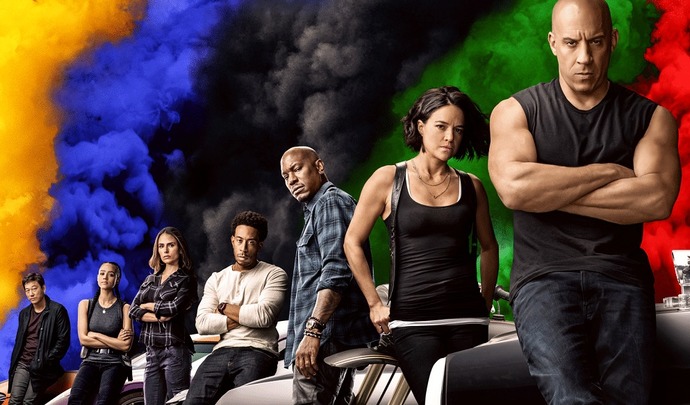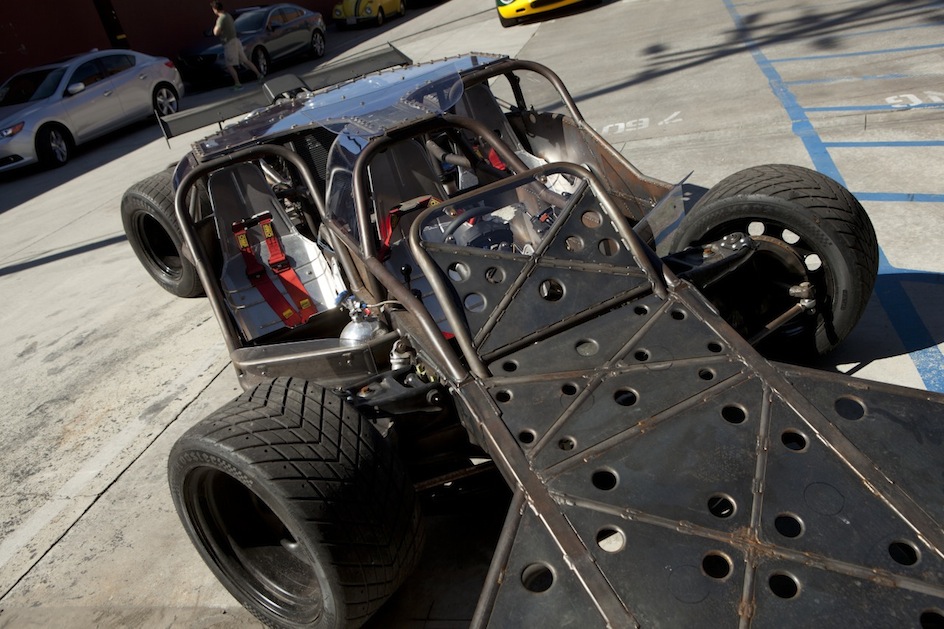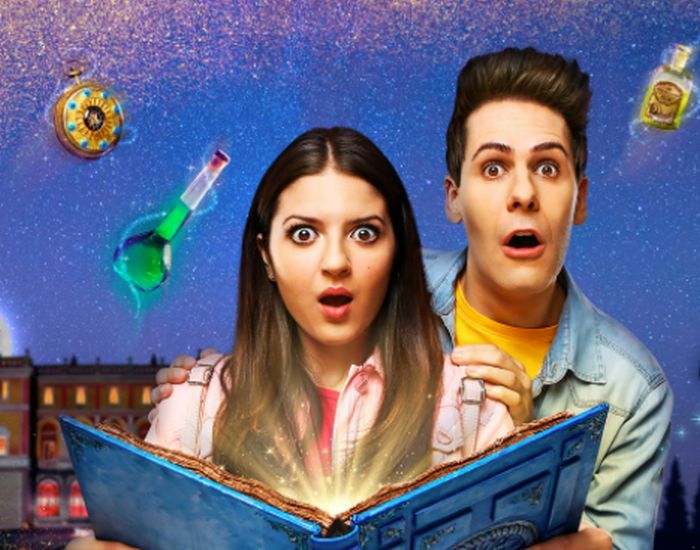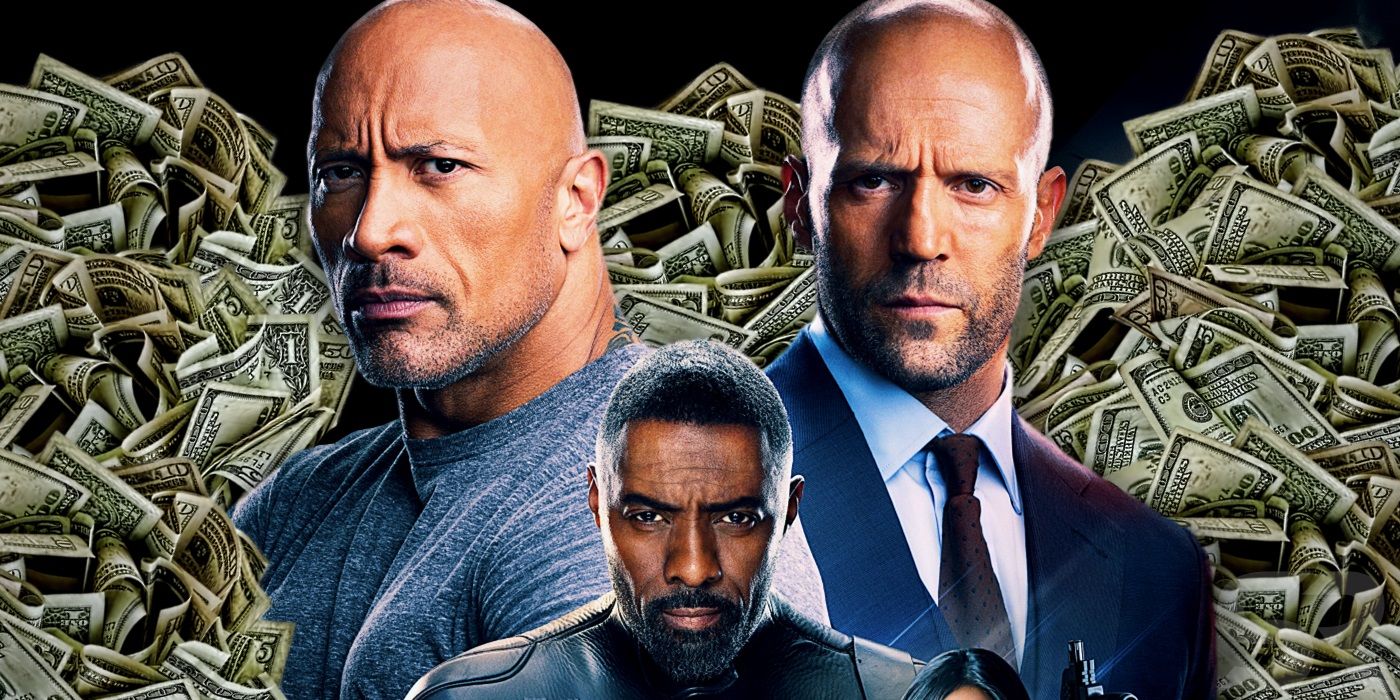The toll of multiple re-shoots dissuaded Wan from returning to the franchise and Universal hired F. This film was to begin a new trilogy, which will conclude the franchise. Diesel announced that introducing Kurt Russell and Charlize Theron as characters in Furious 7 would help to reach this. The film was released in 2017 and received mixed reviews from critics, many of whom praised the performances and action sequences, but criticized the storyline and the long running time. It was an unabashed commercial success, grossing over $1.2 billion worldwide. Universal later announced that final two films will be released in May 2020 and April 2021, with Lin returning to direct.
It was announced that Brewster would reprise her role as Mia Toretto, while screenwriter Daniel Casey was hired for the ninth film; F9 is the first film since Tokyo Drift not to be written by Morgan. Pre-production began in February 2019 in London, and filming began in June and concluded in November. John Cena was cast as the film's villain, portraying Jakob Toretto, Dom's brother. Moreover, Sung Kang returned as Han, while the film is the first to star Helen Mirren and saw Lucas Black reprise his role as Sean Boswell from Tokyo Drift. F9 was originally scheduled to be theatrically released on May 22, 2020, but was pushed back a year to April 2, 2021, due to the COVID-19 pandemic.
It was then pushed back to May 28, 2021, and finally released in the United States on June 25. In 2000, actor Paul Walker had worked with director Rob Cohen on The Skulls. Cohen secured a deal with producer Neal H. Moritz for an untitled action film for Universal Pictures, and approached Walker and asked him to suggest his "dream" action film; Walker suggested a mash-up of the films Days of Thunder and Donnie Brasco . Upon hearing this, Walker signed on immediately; finding his co-star proved difficult. The studio warmed toward the idea of Timothy Olyphant in the role of Dominic Toretto, due to the success of the blockbuster Gone in 60 Seconds , but he declined. Moritz persisted on Vin Diesel following his performance in Pitch Black , with Diesel accepting after proposing several script changes.
Moritz had difficulty choosing between the titles Racer X, Redline, Race Wars and Street Wars, but was ultimately inspired by a documentary on American International Pictures, which included the 1954 film The Fast and the Furious. Moritz was traded use of some stock footage to its director, Roger Corman, in exchange for a license to use the title. Upon release in June 2001, the film shattered box office expectations and a 2002 sequel was green-lit by September. Despite a critical reception that was at least mixed, the film's box office returns were barely enough to earn back its$163 millionbudget.
That's not a massive flop on the scale of "The Adventures of Pluto Nash," but this was a post-"Iron Man" Jon Favreau action movie being released in 2011 with Harrison Ford and Daniel Craig as the leading men. To say everyone involved expected better when they set out to make this movie would be an understatement. When it came time to edit the film, May had produced more than 100 hours of footage, at least three times what a typical comedy of the time would be. Post-production stretched on, with its own various arguments and issues, and the film completely blew past its Christmas 1986 release date. Though "Ishtar" is not as bad as its reputation, it was a bomb, earning$14.37 milliondomestically from a $55 million budget.
While developing the film, Universal completely departed from any street racing elements prevalent in previous films, to transform the franchise into a heist action series involving cars. By doing so, they hoped to attract wider audiences that might otherwise be put off by a heavy emphasis on cars and car culture. Fast Five is considered the transitional film in the series, featuring only one car race and giving more attention to action set pieces such as gun fights, brawls and the heist. Fast Five was initially conceived to conclude the franchise, but following strong box office performance and high critical praise, Universal proceeded to develop a sixth installment.
Furthermore, the film is noted for the addition of Dwayne Johnson to the cast, whose performance was critically praised. "Evan Almighty" had a reported budget, before marketing, of $175 million, in 2007. That might not sound unusual now if you're talking about a huge action movie with a handful of major stars to its name, but this was a sequel to a comedy about a man who was temporarily granted God's powers. "Bruce Almighty," the original film, made more than $480 million worldwide when it was released in 2003, but it starred Jim Carrey andJennifer Aniston— two of the biggest stars in the world at the time — and cost just $81 million to produce.
Bruce plays God, but the film isn't exactly packed full of extravagant setpieces. For "Evan Almighty," the studio decided to go bigger, much bigger, to the point that the film had the distinction of being themost expensivecomedy ever produced at the time. At one point, Sony Pictures was very high on Stealth, director Rob Cohen's action film about a group of pilots dealing with newsci-fistealth technology. The studio put it on the fast track to a prime summer 2005 release and poured a lot of money into marketing it, particularly after co-star Jamie Foxx earned an Oscar earlier that same year. Sadly, Stealth went the same route as other big films released on the heels of major awards seasons for their stars. Adapted from Crichton's 1976 novel "Eaters of the Dead, "itself loosely based on "Beowulf," the film had all the makings of a medieval epic, and blockbuster director John McTiernan was hired to give it blockbuster appeal.
McTiernan shot the film in 1997 for a release the following spring, but then the release was pushed to later in 1998 in the hopes of creating a summer event. Those hopes were dashed when audiences didn't respond well to test screenings. With McTiernan out as director, Crichton reshot much of the film, and "The 13th Warrior" hit theaters in the summer of 1999. While thecritical reactionwasn't completely dismal, the box office waslackluster.
Low ticket sales combined with the cost of reshoots meant the studio may havelostas much as $130 million on the film in the end. A host of tonal clashes and other production troubles led to the film going through multiple directors and writers, including one who was asked to write a new script just a week before principal photography was set to begin. The initial idea was to make a Mario film that had an edge, because the video game was played by adult consumers almost as much as children. It never worked, the production never quite came together, and the finished film is something that barely resembles its internationally famous source material.
The film arrived tonegative reviewsand ultimately earned just shy of$21 millionat the box office, less than half of its reported budget. Bob Hoskins, who played Mario in the film, latercalled it"the worst thing I ever did." The slow march to recovery at the box office continued in international markets at the weekend as theaters opened up and moviegoers continued to return. Progress is being slowed by the lack of new films, particularly from US studios, but catalog titles are filling the void.
China took advantage of an opportunity to release a movie from the Harry Potter archive for the first time in the territory, and Australian film fans got a chance to enjoy some original Star Wars. Some local films are also doing well, partly thanks to the lack of competition. Austria had a strong opening day with 79% market share across 326 screens, the widest release in digital times.
The film delivered $397K on Thursday, the biggest MPA September opening day of all time , and the third biggest opening day since January 2019. The short run in China is both normal and somewhat circumstantial (audiences didn't like it and they didn't care less about #Justice4Han). And if F9 hits $683 million, it'll have earned less of its total in China (31.6%) than Fate of the Furious. Also, of course, credit the film for being one of the few tentpoles to tough it out this summer. When your blockbuster competition is Black Widow, Space Jam 2 and Snake Eyes, well, it's easier to be king.
The most interesting words in the title of Edgar Rice Burroughs's classic adventure novel,John Carter of Mars, are undoubtedly of and Mars. The fact that the braintrust at Disney decided to excise them from the title provides a telling glimpse into what went wrong with John Carter. An adaptation of the source material had been in some form of development since legendary genre director Ray Harryhausen expressed interest in the 1960s. Finally, the film was set with Finding Nemo director Andrew Stanton making his live-action debut, and rising star Taylor Kitsch anchoring his first major film.
With a combined production and marketing cost of $350 million, the film would have had to make at least $600 million worldwide to break even. Although The Lone Ranger marked another similarly glaring failure at Disney the following year, that film's budget was actually trimmed, post-John Carter, minimizing the damage slightly. Typically, a film's success at the box office reveals a lot about its future.
The better a movie does, the more likely we'll see a sequel or franchise. But every now and then, a great movie comes along that just tanks in theaters. It can be due to bad marketing, or other times it's simply lost in a sea of movies in the same genre.
Either way, sometimes a gem of a movie slips through the cracks, ultimately losing all chances of hope . Steve Carell, who played Evan, was already an acclaimed comedy star, but he didn't have Carrey's proven box office draw. All of that, plus the massive costs of visual effects and live animals on the set, led to the film earningjust underits reported budget at the box office. When you factor inpromotional costsand the cut theatrical distributors take from a film's earnings, that means the studio had to take a loss. Series like Stranger Things are proof Netflix can develop a popular, cross-platform franchise on the TV side. The streamer is still relatively new to original film development, even if it feels like the dominant powerhouse in Hollywood right now.
With $15 billion in content spending this year and reportedly releasing 160 movies worldwide, no one comes close to Netflix's output. But it's not how much money a studio spends, it's where that money is being spent. Another late-December musical, 2017's "The Greatest Showman," grew into a sleeper hit on word of mouth despite mixed reviews — but earned an A Cinemascore. Hooper later forced the studio to replace the opening release prints with new DCPs that included enhanced VFX. Awards consideration was never in the cards, and the VFX fixes didn't seem to help. The movie is expected to lose $70 million, and theater chain Alamo Drafthouse is selling out special "rowdy" screenings where audiences get to cosplay and yell at the screen.
That's a pretty big risk on a film of which the only known star to American audiences is Keanu Reeves. On top of that, the critics are shredding the film to pieces — it has only an 11% approval rating on Rotten Tomatoes, which probably explains why the movie debuted at #9. When all is said and done, this could very well surpass R.I.P.D. as the #1 box office bomb of 2013. At least international audiences seem to love their Fast & Furious films while American families are adoring the Despicable Me series.
"Only the Brave" is a fantastic film that I gave a glowing review and most critics agreed, as it earned a Rotten Tomatoes score of 88 percent. Audiences liked it even more, giving it an audience score of 93 percent. Not many people saw this fantastic movie, however, mostly because of bad marketing, and the true story of the Granite Mountain Hot Shots lost $15 million at the box office.
Shrek-spinoff Puss in Boots debuted impurrfecty with $34.1 million , but it quickly turned its fortunes around and finished atop the month of October with a moderately good $143.9 million. Sure, that's not a Shrek-level gross, but Puss wasn't the stray he initially appeared to be. Paranormal Activity 3 scared up a terrific $103.8 million against a $5 million budget, making it one of the most profitable ventures of the year. Hugh Jackman's robot-fighting film Real Steel grossed $84 million, which would be okay if the DreamWorks film hadn't cost $110 million to make. George Clooney and Ryan Gosling's collab The Ides of March found a moderate $40.6 million, while Justin Timberlake and Amanda Seyfried's In Time clocked a weak $36.9 million.
It earned $5.2 million theatrically and another $4.5 million On-Demand. Jungle Cruise, which is based on a 65-year-old riverboat cruise theme park ride, is no slam dunk. Box office tracking has been less predictive during the pandemic, but some sources close to the film already are worried about Jungle Cruise, hopeful the Disney+ premium offering buttresses their numbers, like it did for Disney's Cruella. As the studio did with Black Widow, in a rare display of transparency for the streaming era, it is expected to release the Disney+ numbers for Jungle Cruise publicly. The 1980 Western featuring Kris Kristofferson, Christopher Walken, Isabelle Huppert and Jeff Bridges has become somewhat of a cult classic, but upon release it was a colossal failure and would bankrupt the studio . It was written and directed by Michael Cimino (recently off of the success of 1978's The Deer Hunter), and the failure would ruin his reputation and see the Western genre vanish from the cinema for a full decade.
Cimino was criticized and blamed for the failure, with his vision pushing the film four times over the budget. His insistence on complete creative control contributed to greater control from the studios on other films, seeing the likes of Coppola and Scorsese forced from the driving seat of projects. The film cost $44 million to make and would have a worldwide gross revenue of just $3.5 million, but the impact of its failure would shake the entire film industry. Sometimes you hear about a remake, think "who was asking for this?," and it turns out a lot of people were ready to show up to the theater for an updated take on a classic. Other times you get "Ben-Hur," the 2016 reboot starring "Boardwalk Empire"'s Jack Huston in the title role.
"The Adventures of Pluto Nash,"Eddie Murphy's sci-fi comedy about a smuggler turned lunar nightclub owner, might not have the same reputation as other films on this list do — but that's only because almost no one saw it. The film was supposed to come out far sooner than its August 2002 release, but was delayed because of re-shoots and poor test screenings, to the point that Warner Bros. eventually just decided to roll out the filmwithoutany real promotion or screenings for press. The critics who finally did see the film largelyhated it, but the real proof of "Pluto Nash"'s bomb status is in the box office. From a reported budget of about $100 million, it made just$7.1 millionworldwide.
Not every Eddie Murphy movie can be "The Nutty Professor," but this particular failure was downright astronomical. "Final Fantasy" might not be a video game franchise quite on par with "Super Mario Bros.," but it's still a massive and enduring success that's been running for more than 30 years, so a big-screen adaptation of it would make sense. For "The Spirits Within," video game developer Square turned to its own newly formed studio — Square Pictures — to create an extremely photorealistic animated film. The visuals are indeed stunning, and realistic enough that one of the film's characters appeared alongside real women in Maxim magazine, but nothing else about the film worked.
The most shocking collection of Fast And Furious 9 came from UAE-GCC circuit . Last week, Indian Film Radhe released in Gulf countries and managed to earn USD 1.4 million – 10.10 crores in one week . Here in Gulf, Vin Diesel film has earned USD 5.5 million – 40.10 crores, which means it has beaten Radhe collection of one week in just two days. That simply means the power of Fast and Furious 9 franchise is bigger in Gulf countries as compare to any other films in the world.
This also means that, only screens would have left for Radhe in UAE circuit and lifetime collection could have been around 12 to 13 crores maximum. There are only about 25,000 fans to watch the game, far less than 70,000 fans last time. To make up for the gap, NFL produces 30,000 cardboard fans to fill most of the seats, and disperse to set it to ensure that fans at the scene can guarantee social distance. Universal lacked a major event film for 2014 and rushed Furious 7 into pre-production in mid-2013 due to its status as a bankable asset. Lin decided not to return to direct the seventh film, as he was still performing post-production on Fast & Furious 6.
James Wan, primarily known for horror films, took over directorial duties. On November 30, 2013, Walker died in a single-vehicle crash, with filming only half-completed. Following Walker's death, filming was delayed for script rewrites and his brothers, Caleb and Cody, were used as stand-ins to complete his remaining scenes. The script rewrites completed the story arcs of both Walker and Brewster's characters. Visual effects company Weta Digital was hired to re-create Walker's likeness.
Ultimately, the film's delays saw it being released in April 2015, where it became the highest-grossing film in the franchise, grossing $1.5 billion. It was also the most critically successful, with praise being aimed at the film's action sequences and its emotional tribute to Walker. Away from the franchise, Diesel made a string of box office or critical flops, including The Chronicles of Riddick , The Pacifier and Find Me Guilty . After discussions with Universal, the pair shared an interest in reviving the series. After signing Diesel and confirming the return of Lin, Universal worked to track the first film's original co-stars and re-signed Walker, Michelle Rodriguez and Jordana Brewster in mid-2008.
Walker was initially reluctant to rejoin the franchise after six years, but Diesel assured him that film would be considered the first "true" sequel. Morgan returned to write after the critical praise for the character Han Lue. Given the apparent death of the character in the third film, the timeline of the franchise was altered to account for his appearance. With the emphasis on car culture toned down, the fourth film, Fast & Furious, was a commercial success.






























No comments:
Post a Comment
Note: Only a member of this blog may post a comment.